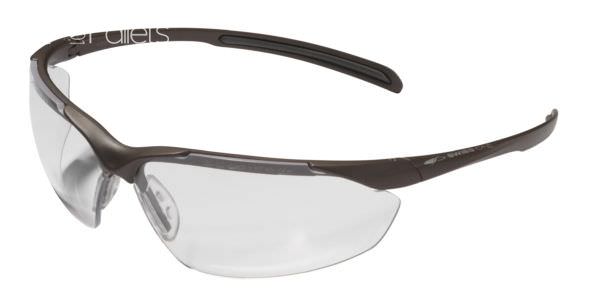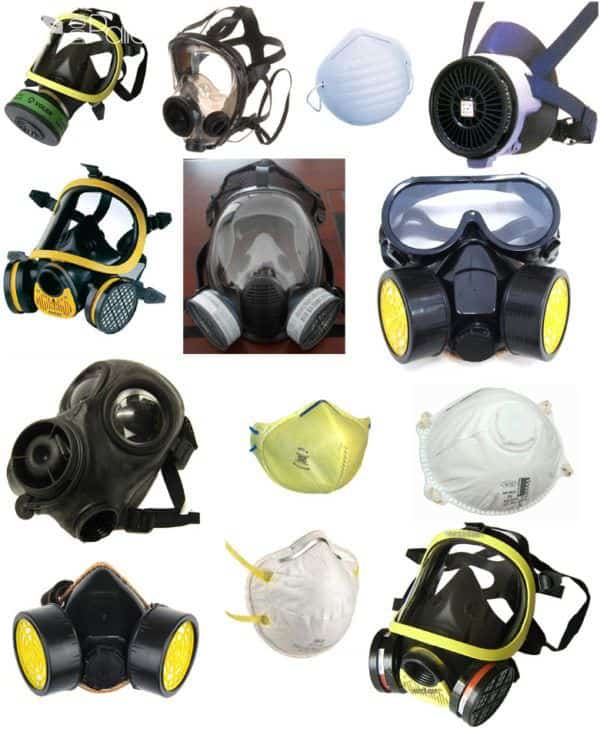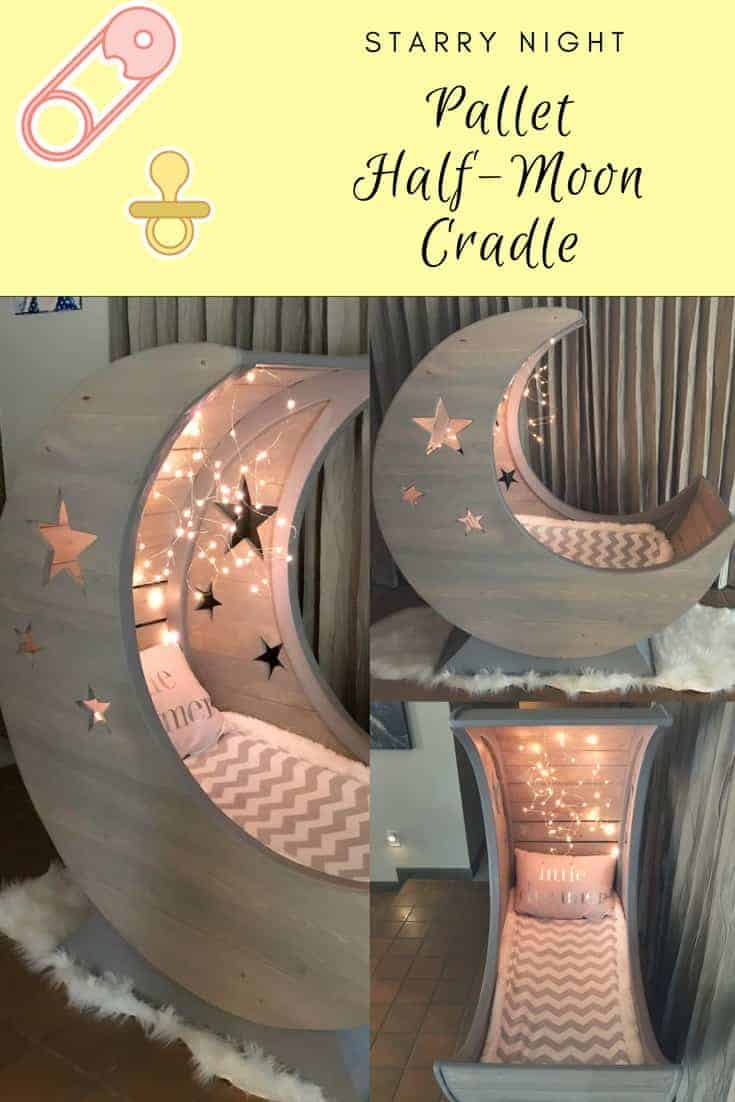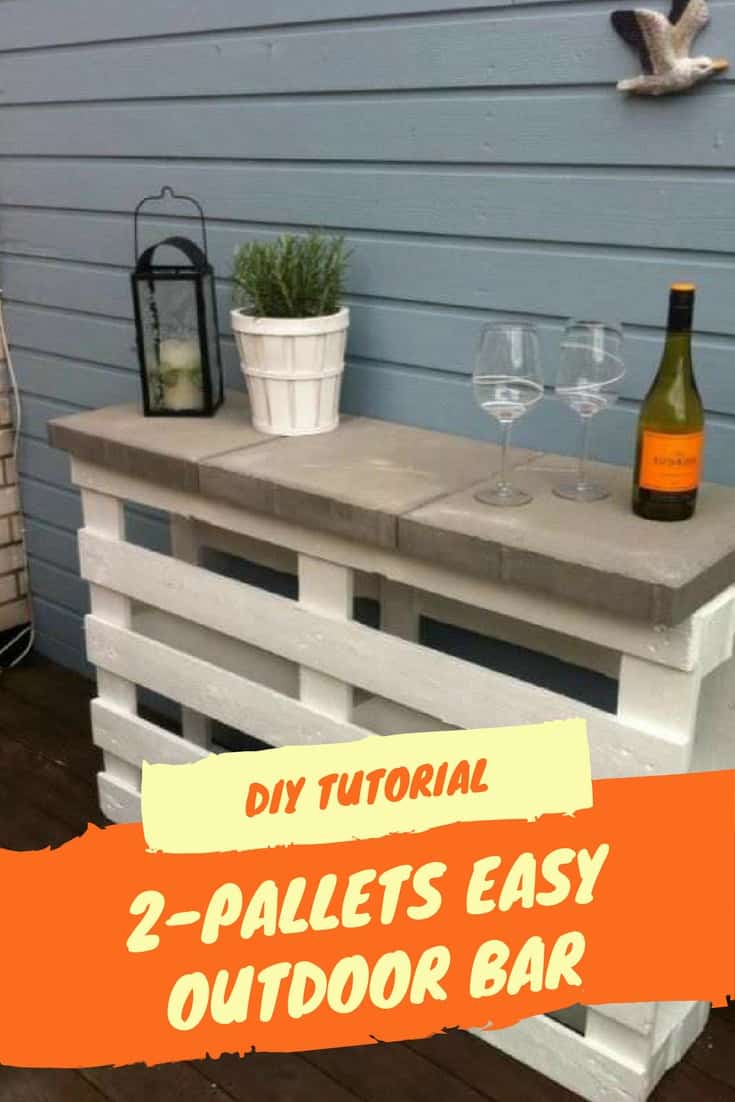It’s funny. I see people writing in every day, commenting about pallet safety. “Is my pallet safe?” What people DON’T ask, and they should, is “How can I be safe when woodworking?” The art and craft of woodworking inherently have risks – like most hobby crafts do – but we can minimize them with some common-sense precautions. Woodworking machines are made to cut, chop, abrade, slice, drill and shave materials that are considerably harder than human skin. When used carelessly, machines are dangerous, and when used properly, machines can be a wonderful help. So, we’ve put together a basic resource for Pallet Woodworking Safety Tips.
We at 1001pallets.com were reminded of this when one of our crafters shared the story of an eye injury incurred when dismantling a pallet, and a chunk of metal shot up and lacerated their eyelid and eyeball. They required emergency surgery but will have follow-up surgery required to REMOVE the metal from the eyeball. Not good.
Remember – we at 1001pallets.com are not the be-all, end-all for safety guidance. We’re a community blog that affords our crafters the opportunity to share their creations and attempt to provide helpful information for you. We’re not professional wood crafters – we’re hobbyists ourselves, so although we try to have the latest, greatest, and most accurate information available for you, it is EVERYONE’S responsibility to look after their safety and the safety of those around you when wood crafting. This site is provided as entertainment and an idea repository!
So, Let’s start with the basics of Pallet Woodworking Safety Tips.
Proper eye protection:
Always wear eye protection when using saws, routers, sanders and other equipment. To keep splinters and dust out of your eyes, use large plastic safety goggles, a face shield or safety glasses. This does not mean designer sunglasses (although there are some designer safety glasses nowadays). These DOES mean that they impact resistant. You can get them in various tints from clear to yellow, to light smoke, to dark enough for welding. Remember – the ones dark enough for welding can make it tough to walk from the outdoors to indoors. Be cautious with those very dark ones. Wraparound styles are much safer. They now look like sports glasses, so your image is safe along with your vision!

You can, indeed, get PRESCRIPTION safety glasses too. There are several online manufacturers that have them at very reasonable prices. Simply search for “prescription safety glasses” and you’ll find many sites with different styles and options for your needs.
Safety Gear Pro is also making a wide range of safety glasses at a very affordable price, if you want to buy from them, we have a coupon code, get 5% with the code PALLETS1001!

Hearing protection:
Always wear proper hearing protection. Hearing protectors – earplugs and padded ear muffs protect your hearing from overexposure to noise. Always wear protectors when using noisy power tools that could cause long-term damage to your hearing.

Earplugs are good, but they only block typically up 20 decibels – and if you’re lucky, 30 decibels maximum. The earmuff-style hearing protection devices are getting so fancy nowadays that you can have styles with a radio AND electronic noise-canceling functionality! If not, the muff-style devices tend to run around 30 decibels of protection. They make low-profile styles too. If you’re curious about how much noise power tools give off, check out this chart, from elcosh.org

Here a nice decibel scale, always remembers that hearing loss can occur when one is exposed to sound levels greater than 85 decibels.

Respiratory protection:
Breathing sawdust is not healthy; it can be allergenic, toxic and carcinogenic. The sawdust from some imported woods, including teak, is particularly harmful and is known to cause skin rashes and repertory problems several studies have shown that woodworkers have a high rate of nasal cancers. Moreover, you aren’t always sure what’s been transported on a pallet. That’s one consideration. A great source for wood-dust information is at the wood-database.com. According to the information, they’ve compiled:
Long-Term Damage: Forget about the large chips and visible sawdust: perhaps the most damaging element is the fine invisible dust (sometimes called “coarse inhalable particles” ranging from 2-10 microns). These tiny bits of sawdust float around the air and linger even after the tools have stopped running. These invisible particles get inhaled and cause tiny wounds and scarring to our lungs: each time this happens, it causes a tiny amount of irreversible damage. The immediate effect is unnoticeable, but over long periods of time, this can result in significantly decreased lung capacity and some other health issues. Additionally, you can become more sensitive/more likely to develop allergies with long-term exposure.
Because even a little sawdust can clog sinuses and aggravate allergies, try to wear a mask whenever you make dust, whether it’s from machinery or sandpaper or sweeping the floor. Masks range from thin paper with an elastic strap to the thick rubber with a replaceable toxic-fume-proof filter. The heavy-duty masks are generally unpleasant to wear so some compromise will need to be made between efficiency and comfort.

At a minimum, always use a dust mask. A bandana over your mouth doesn’t cut it, ladies and gentlemen. A step up is a respirator. Some of you with weakened immune systems or compromised respiratory systems may need something much more aggressive.
Clothing:
Closed-toe shoes – with non-slip soles:
Safety shoes are a plus. Dropping a utility knife or hammer on your toes isn’t fun unless you really dislike having toenails. Make sure the soles are tough and intact. Stepping on nails, staples, or splintery chunks of wood will not make for a fun day.

Long pants:
Wood chips from saws, and just working with rough, splintery pallets isn’t your only hazard. Remember – SPIDERS. Enough said. Don’t even look up what a Brown Recluse spider bite can cause. We are not responsible for any nightmares from that…
Loose clothing & jewelry:
Roll up your sleeves when around moving parts like table saws, band saws, etc. Skip the dangling jewelry and even rings – they can get hung up on things too. In two words, don’t wear loose-fitting clothing or any jewelry. All of these items can get caught in the machines and drag you towards the blades or other sharp parts.
Incidental tangling precautions:
Loose hair:
If you have long hair, clip it back. Just a ponytail may not be enough if your hair is very long. You don’t want it falling over your shoulder into moving parts.

Loose cords:
Don’t forget – a lot of people like working in music, but corded headphones can be dangerous too. If you must, they do make wireless Bluetooth earbuds that have no wires now or have the neckband style wireless setup. Also, keep your workshop area clean and neat so you won’t trip over a scrap of wood or an extension cord at an inconvenient moment.
Hands are handy!
A good pair of work gloves is essential when working with pallets. They’re splintery; there are sometimes those hidden, vicious nails that attack when you least expect it and don’t forget those spiders! Remember – there are some power tools that aren’t safe to use gloves with. Be sure to read your tool manuals and know what safety gear you should – or should not – be wearing.

Tool Safety:
- Read the manual. Specifically, they have a safety alert page. Read the manual and be sure you understand it. If you don’t have the manual, download one. Most major tool manufacturers offer support documents for their products – even old ones. Editor’s note – I was able to download the manual for a 135-year-old treadle sewing machine, as well as a 1970’s wood lathe. Most safety manuals for relatively modern tools are available. – HS.
- Work Area: Keep your work area clean, well-lit, and organized. Clutter or lack of lighting can lead to numerous injuries, including falls and other injuries. Keep pets and children clear of your work area. Always label all chemicals if you transfer them to another container (and make sure it’s the proper type of container). Store and dispose of flammables appropriately per the manufacturer’s directions. Only work on a stable surface.

Extension Cords:
2-prong vs. 3-prong
The Electrical Safety Foundation International (ESFI) has numerous guidelines for extension cord safety. Some of the most basic points are:
- Never use an extension cord with exposed or frayed wires.
- Never use in snow or puddles of water.
- Don’t use a standard, “indoor” extension cord (two holes) for grounded, high-amperage power tools – they typically require an “outdoor” extension cord that has three holes.
- Use an extension cord or temporary power strip that is rated for the products to be plugged in, and is marked for outdoor use.
Please go to ESFI’s website for more information.
Power cutting tools – Just the Basics (most common power tools):
Remember those tips your mother and father taught you as a little one? Never run with scissors; don’t point the blades toward yourself, don’t cut anything towards yourself. Of course, there are a few exceptions, such as using a draw knife – which is intended to be pulled towards oneself. Store sharp tools in a way that you won’t accidentally be cut by them if rummaging in your toolbox or tool bag. Always remember – a sharp blade is less dangerous than a dull one.
If you wish to know further safety precautions with other power tools or hand tools, please see one of the numerous YouTube videos on chisels, prybars, and more.
Table Saws (all brands) – here are some handy safety tips as follows:
Table Saw Kickback:
Kickback happens when the piece of wood you’re cutting gets caught by the back edge of the blade and will get pulled to the side and then kicked back at you at a high rate of speed. If your hand is guiding it, that too can get caught by the blade. There are a couple of things you can do to reduce the risk.
- Do NOT remove or disable the riving knife: Riving knives are those metal projections that are behind the blade and kind of resemble a dorsal fin. Riving knives are not the same as a table saw splitters. Riving knives will rise and fall with the blade height adjustment. Splitters are fixed in place and don’t move with blade adjustments). Splitters are “old-school,” and are being phased out in most countries anymore. But regardless of which type you have, don’t disable or remove it.
- Use a pushing tool or push stick: There are many varieties. Some like the pushing tool that will extend over the length (or most of the length) of the piece of wood and these are typically 12-18” long with an extension handle to keep your hands away from the work surface. Some are simply, literally, a stick. You can custom-make them yourself, or buy them. You may find you’ll need a “light-duty” and “heavy-duty” version. Whatever you use, it’s important that it gives you control over the piece of wood being cut AND keeps your hand away.
- Clean and maintain your saw/watch condition of blade: Remember – greasy or slippery handles, poorly maintained equipment can always be risky. Clean and maintain your saw according to the manufacturer’s directions. If you’re not sure, there are always YouTube videos available out there.
- Use the correct blade for the job: Read your manual for guidance on which types of blades you can use, and when you should use them. Not all saws will accommodate a Dado head blade for example.
SawStop safety device: http://www.sawstop.com/
Reciprocating Saws:
- Read the manual!
- Use two hands. Don’t reach around the device when cutting something.
- Don’t cut down towards your ankles/feet. Using the force (like cutting through the nails in a pallet, particularly as we cut through the lower boards, means that when you go through the nail, the saw will continue to swing in a downward arc. Hopefully, you let go of the trigger before it bumps against your ankle.
- Make sure you’re well-balanced. Not mentally – however, that’s always a bonus – but rather you’ve got a stable standing position. Don’t be leaning too far forward so that when you cut through something you could fall forward.
- Turn off and unplug the saw when changing blades. I know for some of the experienced users, you may be rolling your eyes… but what if you’re holding it just a little carelessly one day? It only takes one moment of carelessness to change your life. It’s not worth it.
Circular Saws:

- Read the manual!
- Always make sure you use a sharp blade. Dull blades bind up. Sharpen old blades; don’t throw them out!
- Don’t bypass the blade guard. Place the blade so that it is about ¼” deeper than the cut you want to make.
- Whenever possible, cut your projects on sawhorses.
- If the blade begins to bind, let the blade come to a stop and then work it out of the cut. Never try to back up or pull backward with a running blade.
- Let the saw get to full speed before attempting to cut.
- Hold the plate or the “shoe” firmly against the item you’re cutting.
Also, remember these safety basics when working with power or hand tools:
- Don’t use machinery when you are tired or have consumed alcohol – any amount of alcohol, even a little bit is too much for operating machinery. This type of machinery is dangerous enough when you are fully alert, so why increase the odds of an accident?
- Focus on what you are doing at all times and take a break if your mind starts to wonder. You are most likely to have an accident when performing the same operation over and over again. Walk away for a few minutes between cuts.
- If you are not comfortable making a cut or aren’t sure if a particular cut is safe, get advice or help before you try it. Find a friendly woodworker to ask, perhaps at the local high school or college.
- Keep saw blades sharp. The harder you have to push, the less control you have over the wood. This can cause slips and loss of fingers or worse.
- Be prepared for accidents. Consider these questions:
- Where is your telephone?
- Where is your first-aid kit? You should always have an extensive first-aid kit available at all times.
- Where is the nearest person who can help you? You should never be alone while woodworking.
- Can you give clear directions to your workshop over the telephone?
- Are you familiar with the basic tourniquet and first-aid techniques?
- If a serious accident does occur, call 911, not your friend. Your friend will not be able to help you if you suddenly go into shock on the way to the hospital.
- If you should be unfortunate as to sever any fingers, take them with you to the hospital in case they can be reattached. Severed fingers should be wrapped in gauze and soaked in a cup of salty water that is kept cold in ice; the fingers should never touch the ice.
Obviously, this is not a complete list. There are other types of power saws, then, of course, hand saws, carving knives, etc., along with power drills, impact drivers, and more.
We encourage you to submit your own safety post on any tool of your choosing- safety is a community effort, and we can learn from one another.
Be safe; be smart, and have years of Happy Palleting – HS. :)







A grinder without the disk cover? Hmmm…
We’d never recommend removing any original manufacturer’s guards, covers, etc. We want you all safe and intact! After all, YOU ALL made this site what it is, so without you, who’s going to make all of these awesome pallet crafts? Be safe out there, people! No bypassing any safety equipment, please. . . Happy Palleting – HS
Aw, thanks for thinking about me :) I didn’t know the dust caused permanent damage. Good thing I’m wearing protection!
Glad to hear you’re wearing respiratory protection! Do you have a brand or style that you’d recommend? We love to hear what kinds of things people are doing to be safe out there. You may help someone else….. Thanks for writing in!